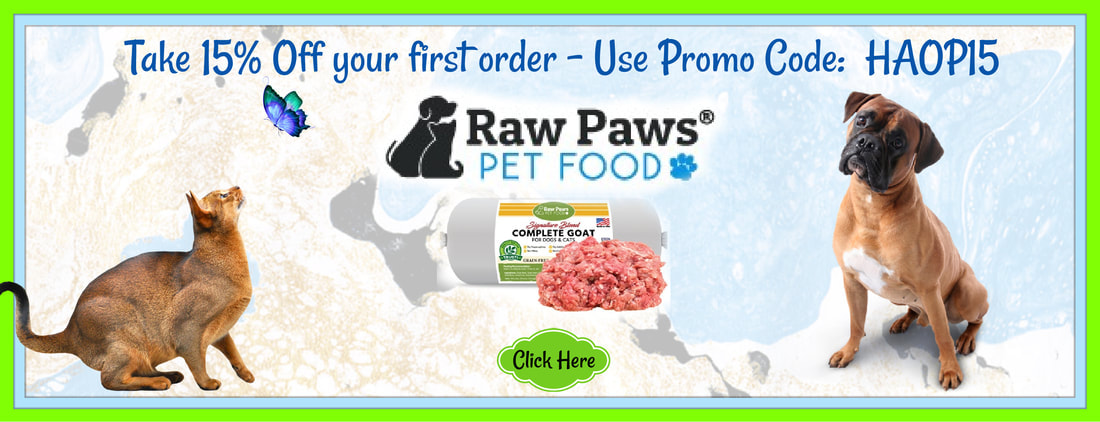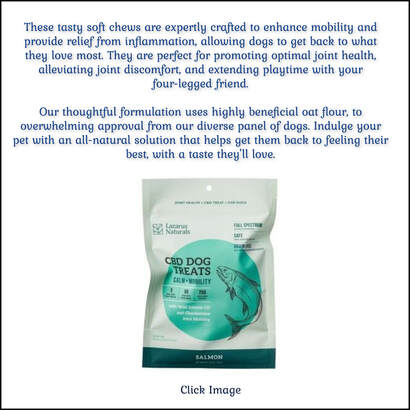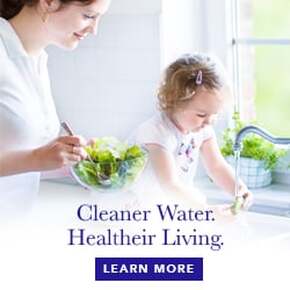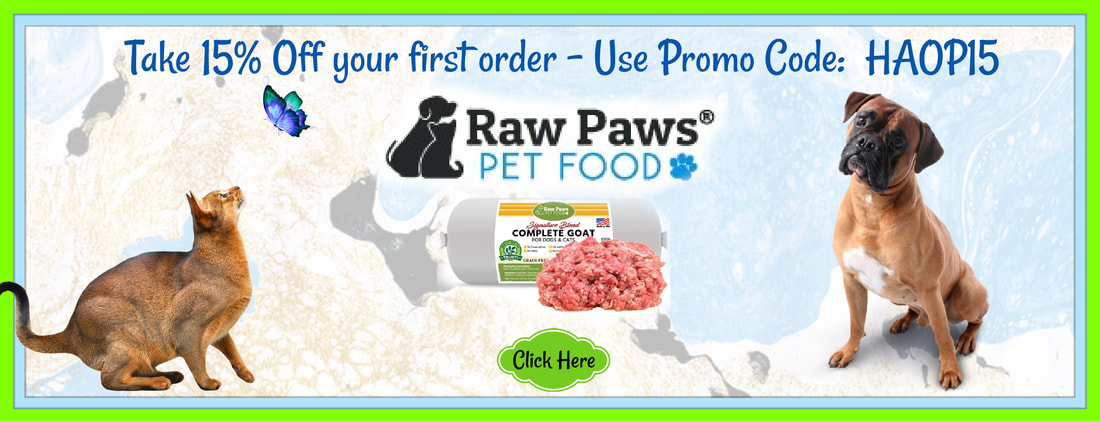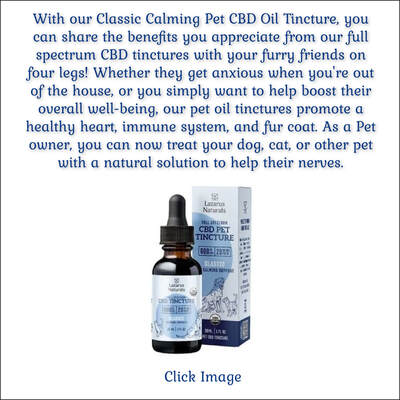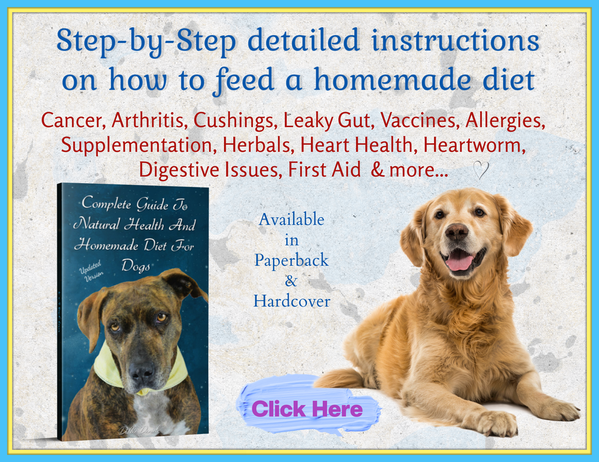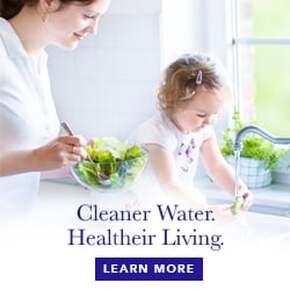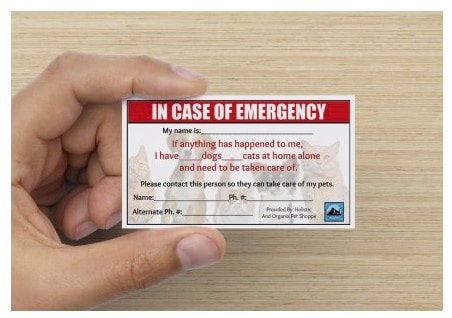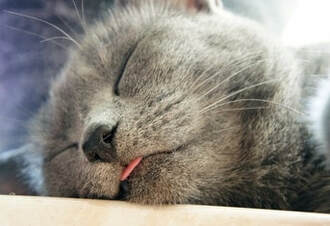
By BlackKatz.com
People sometimes ask me if I can recommend a good dry cat food, but I cannot.
Dry food — kibble — is the worst possible food you can feed to your cat. It is a moneymaking venture of pet food manufacturers that is leading to horrible chronic disease in cats. It is marketed as a product that is 100 percent nutritionally complete for all stages of your cat's life. That couldn't be further from the truth.
Grains are typically classified as carbohydrates and are composed primarily of starch. Pet food manufacturers lead the consumer to believe grains provide energy, protein, fat, fiber, minerals and vitamins to cats. The cat is a member of order Carnivora. Cats and other members of the super family Feloidea are considered obligate carnivores as they have strict requirements for certain nutrients that can only be found in animal tissues. Cats cannot synthesize taurine or arginine, amino acids found only in meat. They lack the ability to convert linoleic acid (contain in plants) to arachidonic acid (contained in animal fat). They cannot convert beta-carotene to vitamin A. Cats cannot decrease activity of hepatic enzymes when fed low-protein foods — they must consume a high protein diet. Cats must eat meat to survive.
People sometimes ask me if I can recommend a good dry cat food, but I cannot.
Dry food — kibble — is the worst possible food you can feed to your cat. It is a moneymaking venture of pet food manufacturers that is leading to horrible chronic disease in cats. It is marketed as a product that is 100 percent nutritionally complete for all stages of your cat's life. That couldn't be further from the truth.
Grains are typically classified as carbohydrates and are composed primarily of starch. Pet food manufacturers lead the consumer to believe grains provide energy, protein, fat, fiber, minerals and vitamins to cats. The cat is a member of order Carnivora. Cats and other members of the super family Feloidea are considered obligate carnivores as they have strict requirements for certain nutrients that can only be found in animal tissues. Cats cannot synthesize taurine or arginine, amino acids found only in meat. They lack the ability to convert linoleic acid (contain in plants) to arachidonic acid (contained in animal fat). They cannot convert beta-carotene to vitamin A. Cats cannot decrease activity of hepatic enzymes when fed low-protein foods — they must consume a high protein diet. Cats must eat meat to survive.
The principal function of carbohydrates in the process of manufacturing dry pet foods is to provide structural integrity to kibble. The starch works like a "cement" that holds kibble together, preventing crumbling throughout the manufacturing process. It is unusual for a dry pet food to be formulated with less than 40 percent carbohydrate ingredients because of the minimum requirement for extrusion. Starch works like a "cement" to hold kibble together! Does that make you wonder what the long-term effect of cement is on your cat's digestive system?
I have used the textbook, Small Animal Clinical Nutrition, 4th ed. published by the Mark Morris Institute a/k/a Hill's Science Diet to do a lot of my research. This book, used by many veterinarian schools as a part of their nutrition curriculum, is a very large book packed with information on small animal nutrition. In the chapter on feeding normal cats, the author states, cats have evolved to a carnivorous diet that is high in protein and low in carbohydrates. Because they evolved as obligate carnivores, cats have difficulty digesting carbohydrates. In omnivores, both hexokinase and glucokinase is responsible for processing of carbohydrates into glucose. The feline liver exhibits normal hexokinase activity but glucokinase activity is virtually absent.
I have used the textbook, Small Animal Clinical Nutrition, 4th ed. published by the Mark Morris Institute a/k/a Hill's Science Diet to do a lot of my research. This book, used by many veterinarian schools as a part of their nutrition curriculum, is a very large book packed with information on small animal nutrition. In the chapter on feeding normal cats, the author states, cats have evolved to a carnivorous diet that is high in protein and low in carbohydrates. Because they evolved as obligate carnivores, cats have difficulty digesting carbohydrates. In omnivores, both hexokinase and glucokinase is responsible for processing of carbohydrates into glucose. The feline liver exhibits normal hexokinase activity but glucokinase activity is virtually absent.
Fatty Liver Disease
Protein metabolism is unique in cats with their unusually high maintenance requirement for protein. Cats do not have a high requirement for any particular amino acid; their high protein requirement is caused by high activity of liver enzymes that process amino acids into energy. Unlike omnivores, cats cannot decrease liver enzyme activity when fed a low protein diet. This is probably why hepatic lipidosis (fatty liver disease) is common in cats fed a dry food diet, especially those that are obese. It is not unnatural or unusual for a cat in the wild to fast. Even though they are successful hunters, they are not perfect and may go days without food. My own cats will sometimes go off their food for a day or more. A potential cause of fatty liver disease in cats is protein deficiency. While the label on dry cat food will show what looks like sufficient protein, a good amount of that protein is coming from grains. I do not believe grains are a high quality source of protein for carnivores or that they are as able to utilize protein from non-meat sources. Cats fed a raw meat diet should not be prone to fatty liver disease, therefore, although I am concerned when one of my cats goes off his food, I do not expect to ever have to deal with fatty liver disease in any of my cats.
Protein metabolism is unique in cats with their unusually high maintenance requirement for protein. Cats do not have a high requirement for any particular amino acid; their high protein requirement is caused by high activity of liver enzymes that process amino acids into energy. Unlike omnivores, cats cannot decrease liver enzyme activity when fed a low protein diet. This is probably why hepatic lipidosis (fatty liver disease) is common in cats fed a dry food diet, especially those that are obese. It is not unnatural or unusual for a cat in the wild to fast. Even though they are successful hunters, they are not perfect and may go days without food. My own cats will sometimes go off their food for a day or more. A potential cause of fatty liver disease in cats is protein deficiency. While the label on dry cat food will show what looks like sufficient protein, a good amount of that protein is coming from grains. I do not believe grains are a high quality source of protein for carnivores or that they are as able to utilize protein from non-meat sources. Cats fed a raw meat diet should not be prone to fatty liver disease, therefore, although I am concerned when one of my cats goes off his food, I do not expect to ever have to deal with fatty liver disease in any of my cats.
There are many factors attributable to onset of fatty liver disease. Carnitine is an amino-group containing, vitamin-like substance found in high concentrations in mammalian heart and skeletal muscle. This amino acid is not considered to be essential by the AAFCO. Cats can synthesize carnitine from lysine and methionine (both found in meat). Methionine is added to most dry cat food brands and lysine is added to the higher end brands. As with most nutrients found in raw meat, I believe it is best to feed the real thing rather than supplementing with synthetic nutrients. In humans, a carnitine deficiency causes hepatic lipid accumulation and liver dysfunction. A similar connection is being investigated in cats. Also, carnitine increases lean muscle mass and enhances weight loss in obese cats.
Many cats with idiopathic fatty liver disease are obese and often the disease is discovered after a fast, be it due to a stressful event, illness or even abandonment. Perhaps these dry-food-fed cats are just barely getting by with the amount and quality of protein available in dry food. It is not uncommon for a cat fed dry food to become obese. A fast simply tips their digestive process over the edge. As mentioned above, protein deficiency is thought to be one cause of fatty liver disease, as is excessive lipogenesis (the process of converting carbohydrate or protein to fat). Very little is known about the causes of feline fatty liver disease.
Many cats with idiopathic fatty liver disease are obese and often the disease is discovered after a fast, be it due to a stressful event, illness or even abandonment. Perhaps these dry-food-fed cats are just barely getting by with the amount and quality of protein available in dry food. It is not uncommon for a cat fed dry food to become obese. A fast simply tips their digestive process over the edge. As mentioned above, protein deficiency is thought to be one cause of fatty liver disease, as is excessive lipogenesis (the process of converting carbohydrate or protein to fat). Very little is known about the causes of feline fatty liver disease.
|
Dental Disease
While there is no documented proof that a natural diet contributes to dental health; periodontal disease is the most common disease of adult dogs and cats. Except for Wiley, now deceased, none of the cats in my care have had to have dental work done. Contrary to what most people have been told by their veterinarian, dry food does not clean teeth! When a cat chews dry food, it shatters into small pieces. In order to promote effective cleansing of tooth and gums, the food must remain in contact with the teeth and gums for a period of time. Nothing is going to provide effective abrasive cleansing than chunks of raw meat. |
Unless you are prepared to brush your cat's teeth or pay hundreds of dollars for dental work, I suggest you start feeding chunks of meat. As I write this, I'm making a note to myself that Ms. Bella, the resident lazy chunky-monkey, chowhound is going to go on an all-chunks diet regimen for a few weeks.
Renal Failure and Urinary Tract Disease
Cats evolved as desert creatures and are well adapted (still!) to survive in a dry climate, if fed their natural food. Cats are not thirst driven like dogs and are able to survive on less water than dogs. They compensate for reduced water intake by concentrating their urine. When fed a dry food diet (which has less than 10 percent moisture), unless they drink a lot of water, which most cats do not, they are in a constant state of dehydration. Moreover, although a cat consuming a dry food diet does drink more water than a cat consuming a canned food diet, in the end, when water from all sources is added together — what's in their diet plus what they drink — the cat consumes approximately HALF the amount of water compared with a cat eating canned foods. On a dry food diet, a cat's urine becomes overly concentrated which leads to feline lower urinary tract disease. Consumption of dry food is associated with lower urinary tract disease as is increased frequency of feeding (a.k.a "free feeding" which is how most people feed dry food), no matter what type of food is fed and obesity.
Cats evolved as desert creatures and are well adapted (still!) to survive in a dry climate, if fed their natural food. Cats are not thirst driven like dogs and are able to survive on less water than dogs. They compensate for reduced water intake by concentrating their urine. When fed a dry food diet (which has less than 10 percent moisture), unless they drink a lot of water, which most cats do not, they are in a constant state of dehydration. Moreover, although a cat consuming a dry food diet does drink more water than a cat consuming a canned food diet, in the end, when water from all sources is added together — what's in their diet plus what they drink — the cat consumes approximately HALF the amount of water compared with a cat eating canned foods. On a dry food diet, a cat's urine becomes overly concentrated which leads to feline lower urinary tract disease. Consumption of dry food is associated with lower urinary tract disease as is increased frequency of feeding (a.k.a "free feeding" which is how most people feed dry food), no matter what type of food is fed and obesity.
Fat, dry-food-fed cats are prone to all sorts of diseases!!
The current trend towards dry food with urine acidifiers (for urinary tract health according to pet food manufacturers) can cause metabolic acidosis, resulting in impaired kidney function and mineral imbalance that includes potassium depletion. Urine that is too acidic provides a good environment for oxalate crystals to form that can cause urinary obstruction. Struvite crystals, associated with an alkaline urinary pH were once the common form of urinary tract disorder, now calcium oxalate crystals, associated with a more acidic urinary pH, are more common.
The first signs of early stage kidney failure are increased water consumption and urination. The cat loses its ability to concentrate urine, something it has naturally evolved to do. The grain proteins contained in dry food release more nitrogenous wastes with digestion. These are converted to ammonia and are expelled by the kidneys, taxing them unnecessarily.
Water, the most important nutrient for all living beings, is missing from dry cat food. It cannot be replaced or substituted.
The current trend towards dry food with urine acidifiers (for urinary tract health according to pet food manufacturers) can cause metabolic acidosis, resulting in impaired kidney function and mineral imbalance that includes potassium depletion. Urine that is too acidic provides a good environment for oxalate crystals to form that can cause urinary obstruction. Struvite crystals, associated with an alkaline urinary pH were once the common form of urinary tract disorder, now calcium oxalate crystals, associated with a more acidic urinary pH, are more common.
The first signs of early stage kidney failure are increased water consumption and urination. The cat loses its ability to concentrate urine, something it has naturally evolved to do. The grain proteins contained in dry food release more nitrogenous wastes with digestion. These are converted to ammonia and are expelled by the kidneys, taxing them unnecessarily.
Water, the most important nutrient for all living beings, is missing from dry cat food. It cannot be replaced or substituted.
Mycotoxins
Before you start moistening your cat's dry food to try to replace the missing moisture, you should know about mycotoxins, another potential side effect of the use of grains in cat food. Mycotoxins are naturally occurring fungal by-products that can cause disease and death in dogs and cats. When grains are improperly stored, mycotoxins can develop. Two common forms, both of which have been found in pet food (more commonly in dog food) are aflatoxin and vomitoxin. Although mycotoxins are found worldwide they only become toxic in temperatures above 82 degrees and over 80 percent humidity at which point they interfere with cellular function, and are extremely carcinogenic and immuno-suppressive.
Aflatoxin B1 is the most toxic of the aflatoxins and is the most potent liver carcinogen known. Substantial evidence exists to indicate that low-level exposure to aflatoxin may cause suppression of the immune system and increase susceptibility to disease. Young and pregnant animals of all species are extremely sensitive to aflatoxins. Aflatoxin is also excreted in milk of dams and may contribute to reproductive failure. Exposure during pregnancy has resulted in transplacental transfer of aflatoxin to and immune dysfunction in offspring.
The elimination of mycotoxins in food is extremely expensive. Pet food manufacturers are not known for using the highest quality grains available; they would not be able to keep up their high profit margins if they did. The grains most pet food manufacturers use are those that are not fit for human consumption or are by-products from other processes.
Before you start moistening your cat's dry food to try to replace the missing moisture, you should know about mycotoxins, another potential side effect of the use of grains in cat food. Mycotoxins are naturally occurring fungal by-products that can cause disease and death in dogs and cats. When grains are improperly stored, mycotoxins can develop. Two common forms, both of which have been found in pet food (more commonly in dog food) are aflatoxin and vomitoxin. Although mycotoxins are found worldwide they only become toxic in temperatures above 82 degrees and over 80 percent humidity at which point they interfere with cellular function, and are extremely carcinogenic and immuno-suppressive.
Aflatoxin B1 is the most toxic of the aflatoxins and is the most potent liver carcinogen known. Substantial evidence exists to indicate that low-level exposure to aflatoxin may cause suppression of the immune system and increase susceptibility to disease. Young and pregnant animals of all species are extremely sensitive to aflatoxins. Aflatoxin is also excreted in milk of dams and may contribute to reproductive failure. Exposure during pregnancy has resulted in transplacental transfer of aflatoxin to and immune dysfunction in offspring.
The elimination of mycotoxins in food is extremely expensive. Pet food manufacturers are not known for using the highest quality grains available; they would not be able to keep up their high profit margins if they did. The grains most pet food manufacturers use are those that are not fit for human consumption or are by-products from other processes.
Carnivore Digestion
The digestive system of a carnivore is very simple. Unlike herbivores and omnivores, cats lack salivary amylase used to initiate digestion of dietary starches. Their jaws have limited side-to-side motion (necessary to grind food) and they have no flat or grinding teeth in their mouths. Their teeth are designed for grasping, cutting, tearing and biting.
The domestic cat's stomach, which is quite small, has two purposes. It holds the food and it is not necessary to hold a lot of food because the natural food of the cat is nutrient dense. Small wild cats hunt more frequently than their larger cousins because their prey is smaller. While lions and tigers may gorge after a kill, small cats, if they are successful hunters, eat more frequently. The second function is the great acid break down. Hydrochloric acid dissolves and liquifies the food. Foods that cannot be digested — raw vegetable matter, cellulose, feathers, teeth and so forth — pass through the animal unchanged. As an experiment, feed your cat some whole corn or peas and watch it come back out the way it went in.
The dissolved food, called "chyme" leaves the stomach at scheduled intervals and enters the small intestine. The length of a cat's small intestine compared to body length is even shorter than a dog's: 4:1 for the cat and 6:1 for the dog. It is from the small intestine the food is digested and enters the bloodstream. The pancreas and liver supply the enzymes necessary to break down the fats and proteins into fatty acids and amino acids. As there is limited enzyme activity capable of digesting carbohydrates, little or no digestion of carbohydrates can take place.
The digestive system of a carnivore is very simple. Unlike herbivores and omnivores, cats lack salivary amylase used to initiate digestion of dietary starches. Their jaws have limited side-to-side motion (necessary to grind food) and they have no flat or grinding teeth in their mouths. Their teeth are designed for grasping, cutting, tearing and biting.
The domestic cat's stomach, which is quite small, has two purposes. It holds the food and it is not necessary to hold a lot of food because the natural food of the cat is nutrient dense. Small wild cats hunt more frequently than their larger cousins because their prey is smaller. While lions and tigers may gorge after a kill, small cats, if they are successful hunters, eat more frequently. The second function is the great acid break down. Hydrochloric acid dissolves and liquifies the food. Foods that cannot be digested — raw vegetable matter, cellulose, feathers, teeth and so forth — pass through the animal unchanged. As an experiment, feed your cat some whole corn or peas and watch it come back out the way it went in.
The dissolved food, called "chyme" leaves the stomach at scheduled intervals and enters the small intestine. The length of a cat's small intestine compared to body length is even shorter than a dog's: 4:1 for the cat and 6:1 for the dog. It is from the small intestine the food is digested and enters the bloodstream. The pancreas and liver supply the enzymes necessary to break down the fats and proteins into fatty acids and amino acids. As there is limited enzyme activity capable of digesting carbohydrates, little or no digestion of carbohydrates can take place.
If the capacity of the small intestine to digest carbohydrate is exceeded, the undigested carbohydrates reach the large intestine. Because the cat has a nonfunctioning cecum and short colon, it has a limited capability to use poorly digestible starches and fiber by microbial fermentation. The small intestine does not join the large intestine in a straight line, but at a right angle. At this point is a small appendage, two or three inches in length, called the cecum. While this has no functional use in a carnivore, it should be noted because it is one of the major differences between a carnivore and an herbivore. In herbivores and to some extent, omnivores, microbial fermentation occurs in the large intestine, especially in the cecum. In a carnivore, the colon has limited functions, to extract excess water and compact the waste material and expel it.
It would not be safe for a carnivore to have a long digestive tract or for the food to stick around for any length of time for risk of bacterial contamination. You certainly would not want protein fermenting in your cat's colon. Carbohydrates and plant matter take longer to digest and it is necessary that the creature consuming carbohydrates or plant matter to have a long, slow digestive tract so that the food matter may be digested as completely as possible. An animal consuming large amounts of carbohydrates or plant material will produce a lot of stool. The stool of a carnivore consuming its natural food is minimal.
It would not be safe for a carnivore to have a long digestive tract or for the food to stick around for any length of time for risk of bacterial contamination. You certainly would not want protein fermenting in your cat's colon. Carbohydrates and plant matter take longer to digest and it is necessary that the creature consuming carbohydrates or plant matter to have a long, slow digestive tract so that the food matter may be digested as completely as possible. An animal consuming large amounts of carbohydrates or plant material will produce a lot of stool. The stool of a carnivore consuming its natural food is minimal.
|
Inflammatory Bowel Disease
Highly digestible food yields more available nutrients for passive or active transport in intestinal absorption. Undigested residue (carbohydrates) alters pH and increases the liquidity of the chyme which means decreased stool quality and diarrhea. This condition may eventually lead to inflammatory bowel disease ("IBD"). The severity of the disorder depends on the amount of carbohydrates escaping digestion in the small intestine. |
Small amounts of sugars or decomposed starch, for example, can have more dramatic effects than large amounts of raw starch of low digestibility. Pet food manufacturers cook and process the carbohydrates they use in their foods in order to increase digestibility. Because of all the carbohydrates, cats consuming dry food are prone to IBD. Most cats exhibiting IBD symptoms (diarrhea and vomiting) experience a complete reversal of symptoms when switched to a grain-free diet. The best results are seen when the cat is put on a grain- and carbohydrate-free raw meat diet.
"Natural" Dry Cat Food
The phrase "natural dry cat food" is an oxymoron. There are an increasing number of "natural" dry cat food manufacturers entering the market. At one time, Flint River Ranch was the dominant "natural" dry cat food manufacturer. Now a new one seems to pop up about every week. They add ingredients to their food to make it look healthier and invariably package the foods in earth tone-colored bags. It is most certainly not healthier. These manufacturers will tell you their food is designed to be exactly like what a cat would eat naturally, just in a dry form. What "dry form" food would a cat ever encounter in the wild? Biscuits leaping across the desert plain? This is the key problem: "in a dry form." Between the addition of grains and removal of water, natural or not, it is not healthy food for your cat. For example, here is the ingredient list for a natural cat food I just discovered on-line:
Chicken meal, Fresh Chicken, Brown Rice, Chicken Fat (preserved with mixed tocopherols, rosemary extract and citric acid), Barley, Fresh Potatoes, Flax Seed, Cold Water Fish Oil (preserved with mixed tocopherols, rosemary extract and citric acid), Fresh Eggs, Dried Chicken Liver, Anchovy Fish Meal, Dried Whole Milk, Dried Whey Extract, Nutritional Yeast, Kelp, Casein, Calcium Carbonate, Potassium Chloride, Lecithin, Choline Chloride, Lactobacillus Acidophilus Fermentation Product, Bifidobacterium Thermophilum Fermentation, Bifidobacterium Longum Fermentation Product, Enterobacter Faecium Fermentation Product, Bacillus Subtilis Fermentation Product, Fresh Blueberries, Fresh Cranberries, Zinc Sulfate, DL-Methionine, Taurine, Iron sulfate, Carnitine, Zinc proteinate, Vitamin E supplement, Creatine, Manganese sulfate, Iron proteinate, Manganese proteinate, Vitamin B12 supplement, Vitamin A supplement, Niacin, Vitamin D3 supplement, Cobalt Proteinate, d-Calcium Pantothenate, Riboflavin, Copper sulfate, Cobalt Carbonate, Biotin, Thiamine Mononitrate, Folic Acid, Pyridoxine Hydrochloride, Copper Proteinate, Sodium Selenite, Papain, Yucca Schidigera Extract.
The phrase "natural dry cat food" is an oxymoron. There are an increasing number of "natural" dry cat food manufacturers entering the market. At one time, Flint River Ranch was the dominant "natural" dry cat food manufacturer. Now a new one seems to pop up about every week. They add ingredients to their food to make it look healthier and invariably package the foods in earth tone-colored bags. It is most certainly not healthier. These manufacturers will tell you their food is designed to be exactly like what a cat would eat naturally, just in a dry form. What "dry form" food would a cat ever encounter in the wild? Biscuits leaping across the desert plain? This is the key problem: "in a dry form." Between the addition of grains and removal of water, natural or not, it is not healthy food for your cat. For example, here is the ingredient list for a natural cat food I just discovered on-line:
Chicken meal, Fresh Chicken, Brown Rice, Chicken Fat (preserved with mixed tocopherols, rosemary extract and citric acid), Barley, Fresh Potatoes, Flax Seed, Cold Water Fish Oil (preserved with mixed tocopherols, rosemary extract and citric acid), Fresh Eggs, Dried Chicken Liver, Anchovy Fish Meal, Dried Whole Milk, Dried Whey Extract, Nutritional Yeast, Kelp, Casein, Calcium Carbonate, Potassium Chloride, Lecithin, Choline Chloride, Lactobacillus Acidophilus Fermentation Product, Bifidobacterium Thermophilum Fermentation, Bifidobacterium Longum Fermentation Product, Enterobacter Faecium Fermentation Product, Bacillus Subtilis Fermentation Product, Fresh Blueberries, Fresh Cranberries, Zinc Sulfate, DL-Methionine, Taurine, Iron sulfate, Carnitine, Zinc proteinate, Vitamin E supplement, Creatine, Manganese sulfate, Iron proteinate, Manganese proteinate, Vitamin B12 supplement, Vitamin A supplement, Niacin, Vitamin D3 supplement, Cobalt Proteinate, d-Calcium Pantothenate, Riboflavin, Copper sulfate, Cobalt Carbonate, Biotin, Thiamine Mononitrate, Folic Acid, Pyridoxine Hydrochloride, Copper Proteinate, Sodium Selenite, Papain, Yucca Schidigera Extract.
It certainly looks better than IAMS or Science Diet, but when was the last time you saw a wild cat in a nature program consuming rosemary, potatoes, milk, brown rice or anchovies?
Rosemary is a preservative (for the fats in the food). Sure it's better than using toxic BHT or BTA or another preservative, but it's still a preservative. You should not feed your cat food that can sit out on the counter top for weeks or months without spoiling. Real food spoils.
Anchovies are added for their omega fatty acid content, but omega 3 fatty acids are far too fragile to survive the shelf life of dry cat food. This company itself claims that it sprays salmon oil onto their food to improve the omega 3 fatty acid ratios. Too bad the salmon oil they recommend is in cobalt blue containers. Salmon oil cannot be properly stored unless it is maintained in an airtight container. The minute that bottle is opened, oxygen gets in and the fats start to go rancid. Capsules are the only way to properly preserve salmon oil.
Why milk is in the food is beyond me. Perhaps to help raise the protein levels or perhaps for calcium. Once cats are weaned, milk is no longer a part of their natural diet.
The blueberries and cranberries are added to help acidify the food to maintain proper urinary tract health. Unfortunately, acidified dry cat food can lead to formation of calcium oxalate crystals. A cat's natural diet (raw meat) maintains a proper pH balance. For many cats, dry cat food does not.
Yucca is added to reduce stool odor, which wouldn't be a problem if the cat were fed a proper diet in the first place.
Rosemary is a preservative (for the fats in the food). Sure it's better than using toxic BHT or BTA or another preservative, but it's still a preservative. You should not feed your cat food that can sit out on the counter top for weeks or months without spoiling. Real food spoils.
Anchovies are added for their omega fatty acid content, but omega 3 fatty acids are far too fragile to survive the shelf life of dry cat food. This company itself claims that it sprays salmon oil onto their food to improve the omega 3 fatty acid ratios. Too bad the salmon oil they recommend is in cobalt blue containers. Salmon oil cannot be properly stored unless it is maintained in an airtight container. The minute that bottle is opened, oxygen gets in and the fats start to go rancid. Capsules are the only way to properly preserve salmon oil.
Why milk is in the food is beyond me. Perhaps to help raise the protein levels or perhaps for calcium. Once cats are weaned, milk is no longer a part of their natural diet.
The blueberries and cranberries are added to help acidify the food to maintain proper urinary tract health. Unfortunately, acidified dry cat food can lead to formation of calcium oxalate crystals. A cat's natural diet (raw meat) maintains a proper pH balance. For many cats, dry cat food does not.
Yucca is added to reduce stool odor, which wouldn't be a problem if the cat were fed a proper diet in the first place.
I believe these natural pet food manufacturers are even more outlandish (if that is possible) than the mainstream manufacturers. They are playing to a particular market: those people with the means to purchase a more expensive product, those who have a cat who may have experienced some sort of health problem due to another brand of cat food (although manufacturers of "prescription diets" may have a firmer hold on that market), but there are certainly those in the mix who are aware of some of the problems associated with grocery store brand cat food, or those who simply want a more natural product to feed their cats. Natural is best, but this does not pertain to dry cat food. There is nothing natural about dry cat food.
While many of the natural dry foods today are manufactured by small companies, the larger manufacturers now have their finger in the pot too. If you look at the ingredients in, for example, Science Diet's "Nature's Best" brand, you will see that it is actually inferior to their Original formula. Brewer's Rice is the first ingredient in Nature's Best, chicken by-product in their Original formula. Is this "Best" for a carnivore?
Many of those smaller companies who are manufacturing food have not spent a lot of time studying feline nutrition and often have no clue of what is involved in feeding a carnivore. If they do have this knowledge, they clearly have disregarded it in favor of marketing a product as healthy when it is truly not.
Although I expect it will never happen because it would be too expensive, I'm waiting for a manufacturer to start dehydrating mice, mixing them with brown rice and calling it cat food.
While many of the natural dry foods today are manufactured by small companies, the larger manufacturers now have their finger in the pot too. If you look at the ingredients in, for example, Science Diet's "Nature's Best" brand, you will see that it is actually inferior to their Original formula. Brewer's Rice is the first ingredient in Nature's Best, chicken by-product in their Original formula. Is this "Best" for a carnivore?
Many of those smaller companies who are manufacturing food have not spent a lot of time studying feline nutrition and often have no clue of what is involved in feeding a carnivore. If they do have this knowledge, they clearly have disregarded it in favor of marketing a product as healthy when it is truly not.
Although I expect it will never happen because it would be too expensive, I'm waiting for a manufacturer to start dehydrating mice, mixing them with brown rice and calling it cat food.
In summary, as a cat's natural diet is low in carbohydrates, they are not designed to digest carbohydrates. Grain is added to dry cat food because it is mechanically necessary in processing the food and they are less expensive than meat, not because carbohydrates are healthy or necessary for your cat.
Michelle Bernard, author of Raising Cats Naturally: How to care for your cat the way nature intended, has spent nearly a decade digging into what makes cats bloom naturally with excellent health. A freelance writer who breeds and shows American Shorthairs, she has been keeping her own cats vibrantly healthy using a raw meat diet, homeopathy, and plain common sense since 1993. Michelle is renowned for her sound approach to rearing cats and her writing on many aspects of holistic cat care. Michelle offers nutritional and natural health consultations from her home in North Carolina.
Michelle Bernard, author of Raising Cats Naturally: How to care for your cat the way nature intended, has spent nearly a decade digging into what makes cats bloom naturally with excellent health. A freelance writer who breeds and shows American Shorthairs, she has been keeping her own cats vibrantly healthy using a raw meat diet, homeopathy, and plain common sense since 1993. Michelle is renowned for her sound approach to rearing cats and her writing on many aspects of holistic cat care. Michelle offers nutritional and natural health consultations from her home in North Carolina.

